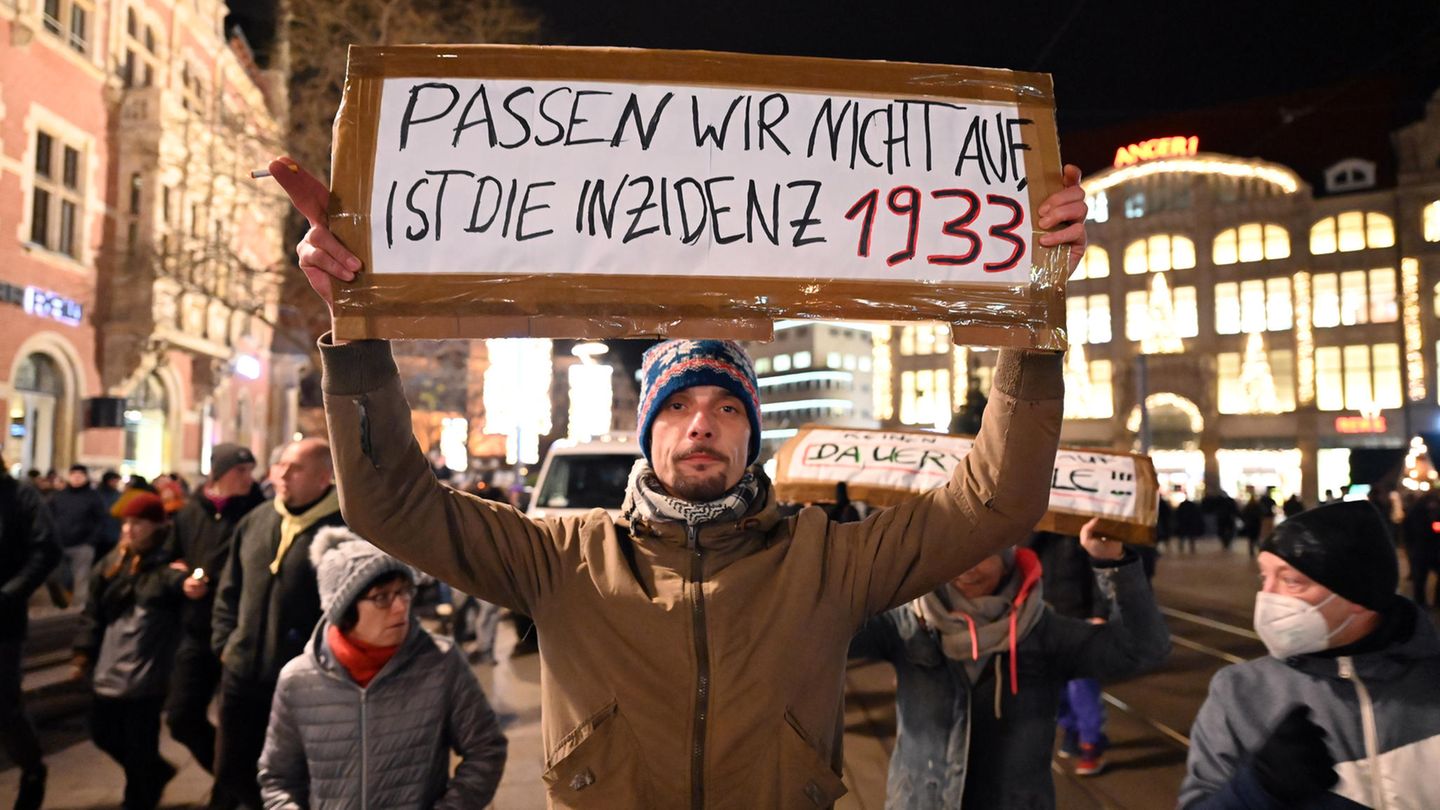In Germany, the incidences are increasing. Bremen, Hamburg and Berlin in particular are setting records – countries with a high vaccination rate. In Saxony and Thuringia it is exactly the opposite. How does this happen?
Since the beginning of the pandemic, the eastern federal states such as Saxony and Thuringia in particular have had to endure scorn, mockery, a little pity, but above all rejection. The reason: The vaccination rate is below the national average – 62 percent of those vaccinated twice, almost 68 percent are considered fully immunized (as of January 25, 2022). In addition, since the beginning of the pandemic, the two federal states have repeatedly made headlines with the lateral thinkers and those who are reluctant to vaccinate, who have expressed their skepticism publicly and, above all, in the media.
On Monday evening around 22,000 people took to the streets in Thuringia alone. In the past few weeks, there have been repeated unannounced and sometimes violent protest marches against the corona measures in the federal state, often organized by the right-wing extremist spectrum. Despite the resistance, the current incidence in Thüringen is 310 – before Christmas it was over 800. Saxony reported 377 new infections per 100,000 inhabitants in one week. The fact that the vaccination rate no longer stands for a low incidence was recently shown not only by the example of Bremen. In Hamburg and Berlin, where more than 70 percent of the citizens are vaccinated twice, the incidence has broken the 1500 mark.
How is it that Saxony and Thuringia became Corona model students in the new year?
Strict measures in Saxony
The fact that the incidence increases in regions with a high vaccination rate is partly due to the fact that the protection against infection decreases after a few months, depending on the vaccine. This was initially confirmed by a British study last autumn. This means: Even vaccinated people can become infected with the virus and pass it on. This is one of the reasons why politicians are pushing for vaccinations to be refreshed and vaccinations to be compulsory. In this way, at least the risk of serious illnesses and death from corona can be reduced. However, that alone does not explain the low incidences in federal states with a comparatively low vaccination rate.
The low incidence in Saxony can be attributed, among other things, to the partial lockdown that the state government introduced in November and tightened before Christmas. According to Prime Minister Michael Kretschmer (CDU), this relieved the hospitals. With a view to the omicron wave, Kretschmer urged the number of intensive care patients to be reduced to 200. A week before Christmas, the state government had passed a new Corona regulation: regions with an incidence of 1500 or more were declared hotspots, and the catering trade had to close. According to a report in the “Leipziger Volkszeitung”, Kretschmer also did not rule out school closures for the new year.
However, the country did not have to implement this measure. Instead, the regulations were even relaxed in the second week of January. Bars and restaurants were allowed to reopen. However, restrictions still apply today. If the situation in the clinics remains relaxed, cultural institutions and hotels can remain open. However, visitors and guests must show a double vaccination and a daily updated corona test. Those who have been boosted, those who have been vaccinated twice three months after the last spade, those who have recovered three months after the illness and those under the age of 18 are exempt from the test obligation. 2G Plus also applies in gastronomy, at trade fairs, congresses and sporting events. Attendance restrictions apply to events.
Incidence could rise again
As the online portal “Watson” reports, citing the epidemiologist Markus Scholz from the University of Leipzig, the partial lockdown has reduced contacts by 50 percent. This is said to have prevented around 3,000 deaths. It seems as if Saxony is over the Corona mountain.
But the opposite is the case. Unlike in northern Germany, for example, the delta variant was still dominant in Saxony until mid-January. After she was only now replaced by Omikron. That means: Saxony broke a corona wave, but it was still a delta wave. The easing in combination with the low vaccination rate could not only provoke the next corona wave with the new virus variant Omicron. Epidemiologist Timo Ulrichs estimates that the hospitalization rate could also increase massively. He told the Watson online portal that the current data is just a snapshot.
In Thuringia, too, the health authorities assume that the situation will worsen again at the end of January. Similar strict measures apply in the federal state as in Saxony. Curfews also apply. Contact restrictions apply to the unvaccinated. The fact that Delta dominated in eastern Germany for longer than in the north has to do with the connections abroad, said Mathias Pletz, director of the institute at the university hospital in Jena, the MDR. The omicron wave initially swept over the north from Denmark, while eastern Germany was affected by the delta wave from the Czech Republic. In this respect, omicron could also spread further in the east of the country with a delay and increase the incidences.
Sources: ““, , “”, “”
Source From: Stern
David William is a talented author who has made a name for himself in the world of writing. He is a professional author who writes on a wide range of topics, from general interest to opinion news. David is currently working as a writer at 24 hours worlds where he brings his unique perspective and in-depth research to his articles, making them both informative and engaging.




